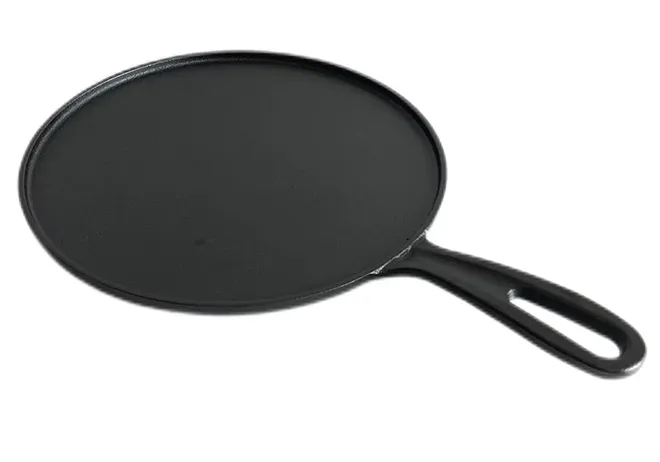
pizza oven skillet
The Perfect Pizza Transforming Your Skillet into a Pizza Oven
When it comes to making a pizza at home, many of us may dream of owning a wood-fired pizza oven. Yet, the reality is that not everyone has the space, budget, or time to invest in such an extravagance. Fortunately, if you have a good-quality skillet, you can make delicious, restaurant-style pizza right on your stovetop. This article will guide you through the essentials of transforming your skillet into a makeshift pizza oven and perfecting your homemade pizza.
Choosing the Right Skillet
The first step in your pizza-making journey is selecting the right skillet. Ideally, you should use a cast-iron skillet or a heavy-bottomed non-stick pan. Cast iron conducts heat evenly and retains it well, producing a beautiful crust that rivals any pizza oven. A non-stick option can be convenient, especially for beginners, as it reduces the likelihood of sticking and makes cleanup easier. Regardless of your choice, ensure your skillet is oven-safe if you prefer to finish your pizza under the broiler.
Making the Dough
A great pizza begins with great dough. You can either make your own from scratch or buy pre-made dough from your local grocery store. If you opt for homemade dough, the basic ingredients include flour, water, yeast, sugar, salt, and olive oil. Let the dough rise for about an hour until it doubles in size, then gently punch it down and roll it out. Aim for a thickness of about 1/4 inch for a perfectly crispy yet chewy crust.
Prepping Your Skillet
Before you begin assembling your pizza, preheat your skillet. Place it on the stovetop over medium-high heat for a few minutes. Adding a thin layer of olive oil will help create a crisp base and prevent sticking. Once the oil is heated, carefully spread out the dough to fit the shape of your skillet, pressing it into the edges to create a slight crust.
pizza oven skillet

Toppings Galore
Now comes the fun part—toppings! When it comes to pizza toppings, the sky's the limit. Start with a base of tomato sauce, pizza sauce, or even a pesto spread. Then layer your favorite cheese—mozzarella is a classic choice, but feel free to mix it up with provolone, cheddar, or even blue cheese for a gourmet twist. Add toppings such as pepperoni, bell peppers, onions, mushrooms, olives, or whatever your heart desires. Remember to balance flavors and textures; too many toppings may weigh down your pizza.
Cooking Your Pizza
Once your pizza is assembled, cover it with a lid or a large piece of aluminum foil to create a mini-oven effect. This traps heat and allows the cheese to melt while the crust cooks to golden perfection. Cook on medium heat for approximately 10-15 minutes, checking regularly to avoid burning the crust. If your skillet is oven-safe, you can finish the pizza under the broiler for a couple of minutes to achieve that desired bubbly, browned cheese—just watch carefully to prevent charring.
The Final Touch
Once your pizza is cooked to perfection, take it off the heat and let it cool for a minute before slicing. To add a touch of freshness, consider garnishing your pizza with fresh basil, arugula, or a drizzle of balsamic glaze. Serve it hot and enjoy the satisfaction of having made a delicious pizza in your skillet, proving that you don’t need a fancy pizza oven to enjoy this beloved dish.
Conclusion
Transforming your skillet into a pizza oven is not only feasible but also a fun and rewarding cooking experience. With a few simple steps, you can create a homemade pizza that rivals your favorite pizzeria. Whether you are cooking for yourself or entertaining friends, this approach to pizza-making turns an ordinary meal into a delightful occasion. So, dust off that skillet, gather your toppings, and embark on a delicious pizza-making adventure today!
-
Season Cast Iron Perfectly with GPT-4 Turbo TipsNewsAug.01,2025
-
High Quality Cast Iron Cookware - Baixiang County Zhongda MachineryNewsAug.01,2025
-
Premium Cast Iron Pan: Durable & Perfect HeatNewsAug.01,2025
-
High Quality Kitchen Durable Black Round Cast Iron Cookware Pancake Crepe Pan-Baixiang County Zhongda Machinery Manufacturing Co., Ltd.NewsAug.01,2025
-
Cast Iron Cookware - Baixiang County Zhongda Machinery | Nonstick, Heat ResistanceNewsAug.01,2025
-
High Quality Kitchen Durable Black Round Cast Iron Cookware - Baixiang County Zhongda Machinery | Non-Stick, Heat Retention, DurableNewsJul.31,2025


